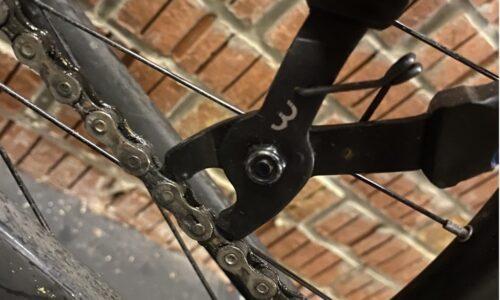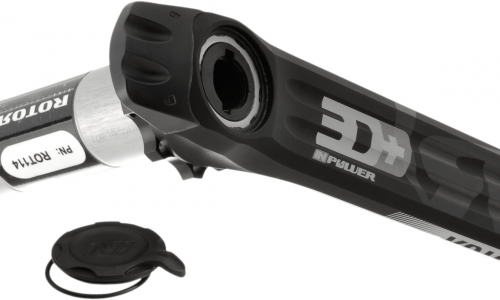A leaky tubeless value is one of the most annoying things that can happen to a cyclist. It can be a tricky fix to stop air leaking out, and diagnosing the problem can additionally be tedious. Of course, some say it’s easy and can simply be fixed with a quick bit of tape.
However, without knowing what to look for, it’s challenging to identify the root cause of the problem. That means you need to remove the tire and take a proper look at the issue. And, of course, that makes the whole operation a lot more complicated.
Even if you’re experienced in fixing a leaking tubeless valve stem, it can still be a tricky fix. Here are the reasons why it happens and some top tips to fix it.
Why does it happen?
A leaking tubeless valve stem is mainly caused by two issues – a damaged or incorrectly installed tape, or a value that is not set up properly.
If the tape around the tubeless value stem is in any way compromised, then air will leak into the rim, which in turn will usually be released through the valve stem hole. This air leakage can occur because the valve stem isn’t sealed tightly so it’s the logical option for the air to escape.
If you can hear the air pressurising out of the valve stem, the first step is to make sure the valve stem is set up correctly. If the valve stem is installed correctly and is tight, but the air is still leaking, the cause will be damaged or poorly installed tape.
How tubeless systems work
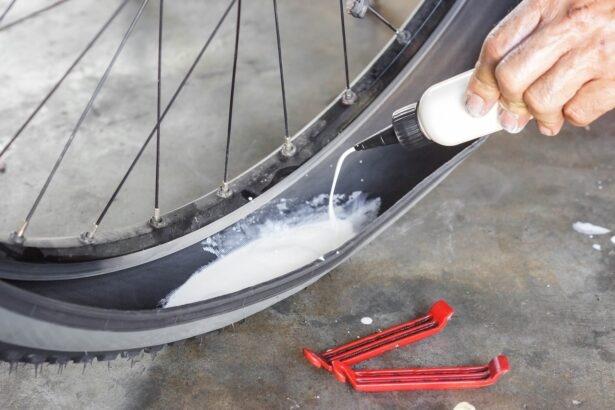
Being tubeless, there is no inner tube to hold the air inside your bike tire. Instead, the tire is sealed by an airtight fit between the rim and the tire, preventing air from leaking out.
For that to be successful, there needs to be a layer of rim tape that closes the rim spoke holes and helps seal the air in. Hence one of the main causes of air leakage being damaged tape. Because the rim spoke holes are quite large and sharp, the tape is normally pretty rugged and durable.
The tubeless valve is an additional part that is normally sealed with rubber close to the valve hole on the rim. The valve stem is tightened by a locknut, which can be seen on the outer side of the rim.
The tubeless tape
Tires need to be ‘tubeless ready’, so normal bike tires can’t be used on a tubeless set up. This is because tubeless tyres have stronger side walls so they don’t leak air without an inner tube.
Tubeless tires hold the air much the same as an inner tube does, with the tire’s bead sticking to the rim and rim tape to seal the air in completely.
If there are any gaps, tubeless tyres typically have a sticky sealant poured inside the tire to plug the holes effectively. That helps if you get a puncture as the sealant works to close the damage.
Some riders use double layers of rim tape to create a stronger seal inside the tire, however, it can add extra weight to the wheels and is also harder to replace. To perform properly, tubeless rim tape must be sticky.
If the rim tape isn’t sticky enough or is made of poor quality, it’ll leave air bubbles and gaps between the tape and rim, causing air leakage. It also needs to mix well with the sealant inside the tire.
Additionally, tubeless rim strips are made specifically for certain rims, with a fitting for a tubeless valve. However, that can be a problem as they need to accommodate the valve and properly fit the rim they are on.
Because of the incompatibility with different rims and tubeless valves, tubeless rim strips aren’t particularly common anymore.
The tubeless valve
As mentioned, the tubeless valve is usually sealed by rubber. This is pretty effective at keeping air in, but can be damaged. For instance, if the whole valve twists, then the rubber block sealing it will get damaged and create a leakage gap. So they need to be treated carefully.
The other sealant options are a metal block with a rubber seal and a cone-shaped rubber seal. The metal block with rubber has issues with compatibility, so it’s often seen on modern bikes, but the cone-shaped rubber seal is a more popular option today.
How to fix valve stem leakage?
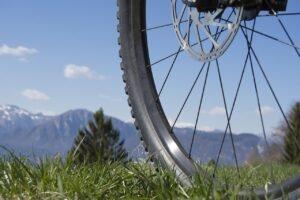 If the sealant is a cone-shaped valve, then the first thing to check is if the rim tape valve hole is completely opened. Make sure there is no extra room there by pushing in the valve and increase the tension with the locknut to try and seal all the gaps.
If the sealant is a cone-shaped valve, then the first thing to check is if the rim tape valve hole is completely opened. Make sure there is no extra room there by pushing in the valve and increase the tension with the locknut to try and seal all the gaps.
If the tubeless valve stem is still leaking, it’ll likely be a tape issue. It could be there are gaps in the tape installation, or there may be damage to the tape near the valve hole. If that’s the case, you can add tape to a small part of the damaged rim tape to form a patch and close any gaps.
If the problem is the valve stem itself, you can either change the valve stem or attempt to seal the gaps another way. That’d be a DIY option but you could use an old tube or rubber to create o-rings.
This isn’t advisable, however, as they are usually too thick and difficult to morph into the shape needed to plug the gap. Adding patches to the rim tape is another option, especially if the rim shape isn’t smooth.
The added thickness of the additional rim tape can help squeeze the gaps and seal the valve better. You could also add more sealant into the tire and spin the wheel once the valve is back on to try and create another inner layer of the goo.
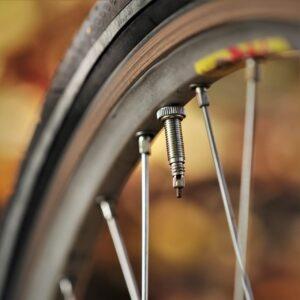 Rim tape leakage caused by damaged tape is just as likely as leakage from the valve stem. If it’s because the rim tape isn’t sticky enough, then the only proper option is re-installing rim tape with a stronger and more robust option.
Rim tape leakage caused by damaged tape is just as likely as leakage from the valve stem. If it’s because the rim tape isn’t sticky enough, then the only proper option is re-installing rim tape with a stronger and more robust option.
For cuts or splits in the tape, a patch of new tape will do the job. Split tape is unfortunately pretty common as the rim edges can be sharp.
Remember, never tighten a valve stem with pliers. It’ll damage the stem and cause further problems. If the valve stem is seated properly and tight, but the air is still leaking, you’ll have a breached tape.
If you’re trying to pump air into the tire, be careful not to force air through in case the tire blows off the rim. Additionally, if sealant is leaking out of the rim, particularly at the valve stem hole, you need to remove the tire and thoroughly re-visit the taping.
Check the tape, fix it if required, and ensure the valve stem isn’t faulty and is seated firmly in the rim hole.
Putting your air leakage problem behind you
Air leakage in tubeless wheels, unfortunately, happen. The good news, however, the problem doesn’t need to be an end-of-the-world event.
In order to prevent the problem from happening, ensure the rim tape being used is a well-recommended, good quality option, and take care when installing it, and use proper tubeless tyre sealant to help seal the tyre and the rim. This should be replaced at least once a year.

Founder of Vivi Nation, the cycling, running and active living brand. Chris is a sports enthusiast, occasional triathlete and experienced cyclist, having led multiple cycle tours across Europe.

